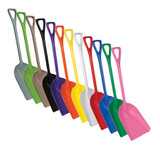How to Report a Pet Food Complaint
You can report complaints about a pet food product electronically through the Safety Reporting Portal or you can call your state’s FDA Consumer Complaint Coordinators.
Please have as much of the following information available when submitting your complaint:
Consumers often transfer dry pet food into other containers for easier handling. If possible, please save the original packaging until the pet food has been consumed. The packaging contains IMPORTANT information often needed to identify the variety of pet food, the manufacturing plant, and the production date.
- Exact name of the product and product description (as stated on the product label)
- Type of container (e.g. box, bag, can, pouch, etc.)
- Product intended to be refrigerated, frozen, or stored at room temperature
- Lot number - This number is often hard to find and difficult to read. It is stamped onto the product packaging and typically includes a combination of letters and numbers, and is always in close proximity to the best by/before or expiration date (if the product has a best by/before or expiration date). The lot number is very important as it helps us determined the manufacturing plant as well as the production date.
- Best by, best before or expiration date
- UPC code (also known as the bar code)
- Net weight
- Purchase date and exact location where purchased.
- Results of any laboratory testing performed on the pet food product
- How the food was stored, prepared, and handled
Description of the problem with the product. Examples include:
- Foul odor, off color
- Swollen can or pouch, leaking container
- Foreign object found in the product.
If you think your pet has become sick or injured as a result of consuming a pet food product also provide information about your pet, including:
- Species (dog, cat, rabbit, fish, bird, other)
- Age, weight, breed, pregnant, spayed/neutered
- Previous health status of pet
- Any pre-existing conditions your pet has
- Whether you give your pet any other foods, treats, dietary supplements or drugs
- How much of the suspected product your pet normally consumes
- How much of the “suspect” product was consumed from the package?
- How much of the product you still have
- Clinical signs exhibited by your pet (such as vomiting, diarrhea, lethargy)
- How soon after consuming the product the clinical signs appeared
- Your veterinarian’s contact information, diagnosis and medical records for your pet
- Results of any diagnostic laboratory testing performed on your pet
- How many pets consuming the product exhibited clinical symptoms
- Whether any pets that consumed the product are not affected
- Whether your pet spends time outdoors unsupervised
- Why you suspect the pet food caused the illness
Aug 19, 2016
Recent Posts
-
The Origin of the Michelin Guide
From a little red guide book to an iconic standard in international fine dining, have you ever w …Mar 10, 2024 -
Make Color-Coding Your Resolution
Color-coding is a simple way to have a big impact on your facility’s food safety, sanitation and co …Jan 16, 2024 -
Why EPDM Transfer Hoses are a Great Choice for your Brewery
EPDM stands for ethylene propylene diene monomer. It’s a synthetic rubber that has quickly gained t …Jun 14, 2023



